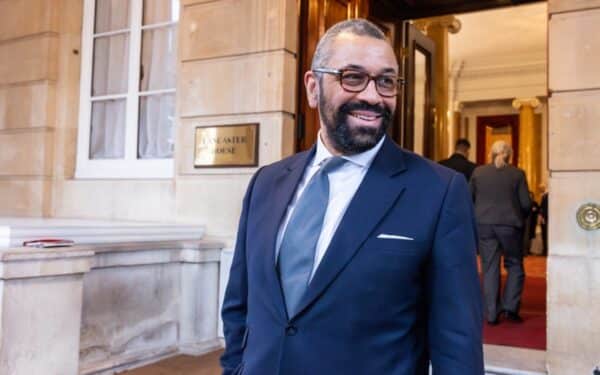During the Great Plague that gripped London during 1665, the great and the good – the Court of Charles II, together with the lawyers of Temple, the merchants of the Square Mile and the helpless doctors – fled the City, clutching nosegays to their nostrils.
Not so the Vicar of St Bride’s in London’s Fleet Street, the Rev’d Richard Peirson. He remained at his post, keeping his church open, tending to the sick and dying and presiding at a dismal litany of funerals
His registers record the peaks of mortality in his crowded parish – 636 in a single month, 238 in a week, 43 on one day. His senior churchwarden, Henry Clarke, became a victim; his brother William took over and also died. Peirson himself miraculously survived. The grand total of St Bride’s dead was estimated at 2,111.
Today, some 355 years later, St Bride’s has on its website’s home page the message that: “Following a statement by the Bishop of London, St Bride’s Church is now closed to the public due to the Coronavirus outbreak.” All across the land it’s the same – our churches have notices pinned to the door announcing that, while we’re closed, “the church is still very active” and pointing to live-streaming on Facebook and YouTube.
In many ways, the plagues of 1665 and 2020 are incomparable (apart from no one ever having mild symptoms of bubonic plague). Our modern standards of hygiene, the ability to stay at home in splendid isolation, our wondrous communications technology and the fact that the Church is no longer a sole source of social support and healthcare – all this means that churches are more of a threat as gathering places than a source of salvation from disease.
And yet… there are those, myself included, who feel that there is something pusillanimous and profane in the the Church shutting up shop in the face of a mortal threat to its people. In the south-east of England, where I live and minister and where Covid-19 arguably has its firmest grip if London is included, voices are raised in dissent at the Church’s lock-out.
Stephen Hazell-Smith, chair of Friends of Penshurst Church, in Kent, says that closing churches is “unnecessary and not in the spirit of Christianity”, adding that churches further impoverished by coronavirus will find it harder to raise funds after their chosen self-isolation. A leading figure in Romney Marsh Churches Trust, which cares for 14 churches, says it’s “always a better option to keep churches open”.
And Tim Stanley, a Roman Catholic, writes in the Telegraph that historians might conclude that “the Church establishment retreated into health and safety, not only because they wanted to do no harm but because Western society is post-religious, science has won, doctors are the new priests and the Church is not sure what to say or if anyone is even listening. They are wrong. This is a fight for life and many of us believe it necessitates prayer. The churches should reopen.”
A big part of the problem is the Church establishment’s stuttering response to the crisis, which makes the Government’s own response look like a slickly executed strategy by comparison. First, I was told only that, like Pontius Pilate, I had to make sure I washed my hands. Then I was instructed to keep numbers in church for pastoral services – weddings, baptisms and funerals – to a minimum. Then the minimum number required to marry a couple in church, five, became the maximum allowed. Then services in church were banned entirely.
All that happened in the last 10 days of March. At first, I thought I could celebrate communion in church with a couple of my ministry team (“Where two or three are gathered together, there I am also” Matthew 18:20). Then I was told I couldn’t, though the ban on priests saying mass alone was lifted. But I wasn’t allowed to do so in church. Then I was again, if I felt I had to “in conscience”.
All this matters. But it arguably doesn’t matter as much as it does to wedding couples, who didn’t know whether the Church was telling them they couldn’t get married – and could therefore claim on insurance for reception venues and caterers. Or whether, if restrictions were lifted in time for a summer wedding, their banns could be read in time or they needed a special licence.
I now face the faintly absurd position that I have two funerals to conduct in Holy Week ahead of Easter. I’m allowed to conduct them in the crematorium, where there could be a dozen funerals a day and the risk of cross-infection must be high, but not in my church, which would be comparatively safe.
A big part of the problem is the Archbishops we have at Canterbury and York. They are both of an evangelical persuasion and speak of “finding new ways of being church” during this crisis. Their followers become quite excited by technology and the live-streaming of services, presumably because that is a new way of being church.
They have little regard for those of us further up the candle, for whom the reformed catholic doctrine of consubstantiation – the “real presence” of Christ in the Eucharist – also requires the real presence of other Christian witnesses, the Body of Christ in the world. Could that be achieved with sensible social-distancing and restricted numbers (like at a funeral in a crematorium)? I think so.
But, more basically, it looks like our Church of England has abandoned the inspiring example of Rev’d Peirson, hero of St Bride’s, where I served my own training curacy a little over three centuries after he showed what servant ministry was all about when the going got tough. God bless him.
The Rev’d George Pitcher is Rector of the Parish of Waldron in East Sussex.




